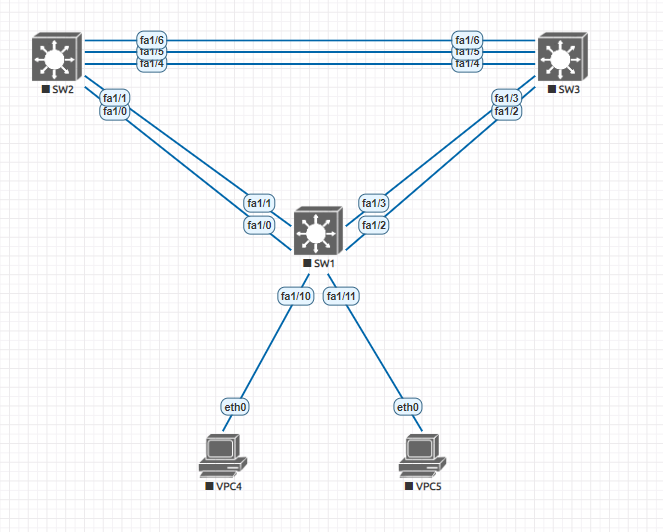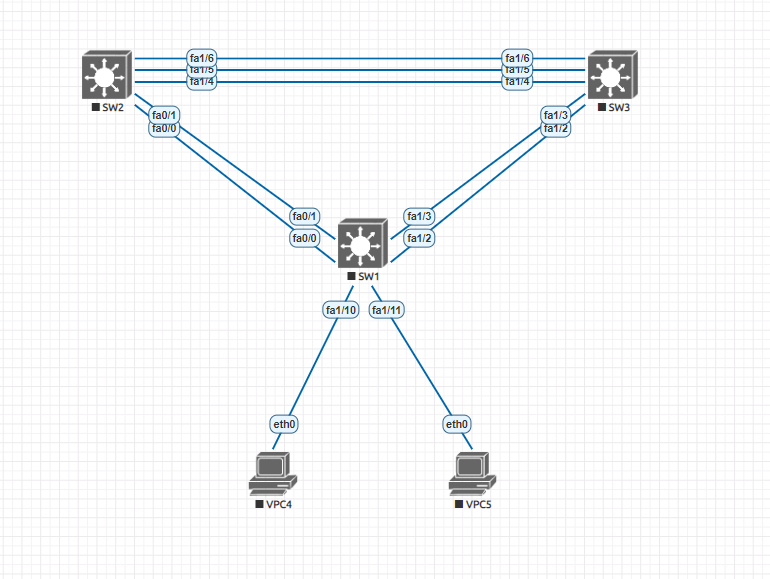VRRP (Virtual Router Redundancy Protocol) is a first hop redundancy protocol that is similar to HSRP. The key distinction between HSRP and VRRP is that HSRP is Cisco-specific and may only be used on Cisco devices. VRRP is a standards-based protocol that is manufacturer agnostic, allowing for some flexibility in network device selection.
VRRP uses preamption by default unlike HSRP and allows devices to automatically assume the master role.
In this lab I will show you how to configure VRRP. The lab will use the same initial configuration here to setup the lab. Then follow along after you have the environment setup.

How to configure VRRP
After the initial configuration log into SW2 from this configuration. As mentioned we do not need preemption since it will be enabled by default when using VRRP.
Switch SW2 VRRP Configuration
Lets configure SW2 interface vlan 10 and interface vlan 20 with the below VRRP configuration:
SW2(config)#interface vlan 10
SW2(config-if)#vrrp 10 ip 10.10.0.254
SW2(config-if)#vrrp 10 priority 150
SW2(config-if)#interface vlan 20
SW2(config-if)#vrrp 20 ip 10.20.0.254
SW2(config-if)#exitSwitch SW3 VRRP Configuration
Now lets configure SW3 interface vlan 10 and interface vlan 20 with the below VRRP configuration:
SW3(config)#interface vlan 10
SW3(config-if)#vrrp 10 ip 10.10.0.254
SW3(config-if)#interface vlan 20
SW3(config-if)#vrrp 20 ip 10.20.0.254
SW3(config-if)#vrrp 20 priority 150
SW3(config-if)#exitNow lets verify our VRRP configuration on both switchs using the command “show vrrp brief”. Your output should look like this on SW2 & SW3


Testing VRRP Configuration
Now that we walked through how to configure vrrp, lets do some testing. On the pc in vlan 10 run a continuous ping to 192.168.1.1. Go to SW2 and run the command “shutdown” on interface vlan 10. You will notice that you will get very little packet loss on the pc and you will see SW3 router take over. Do the same thing on SW3 for interface vlan 20 and the other pc.
Conclusion
You learned how to configure VRRP using eve-ng. With VRRP being vendor agnostic you can use this same first hop redundancy protocol on other vendors as well unlike HSRP.



